Comparative review – 3 Modern Worldtimer Watches from Vacheron Constantin, Jaeger-LeCoultre and Montblanc
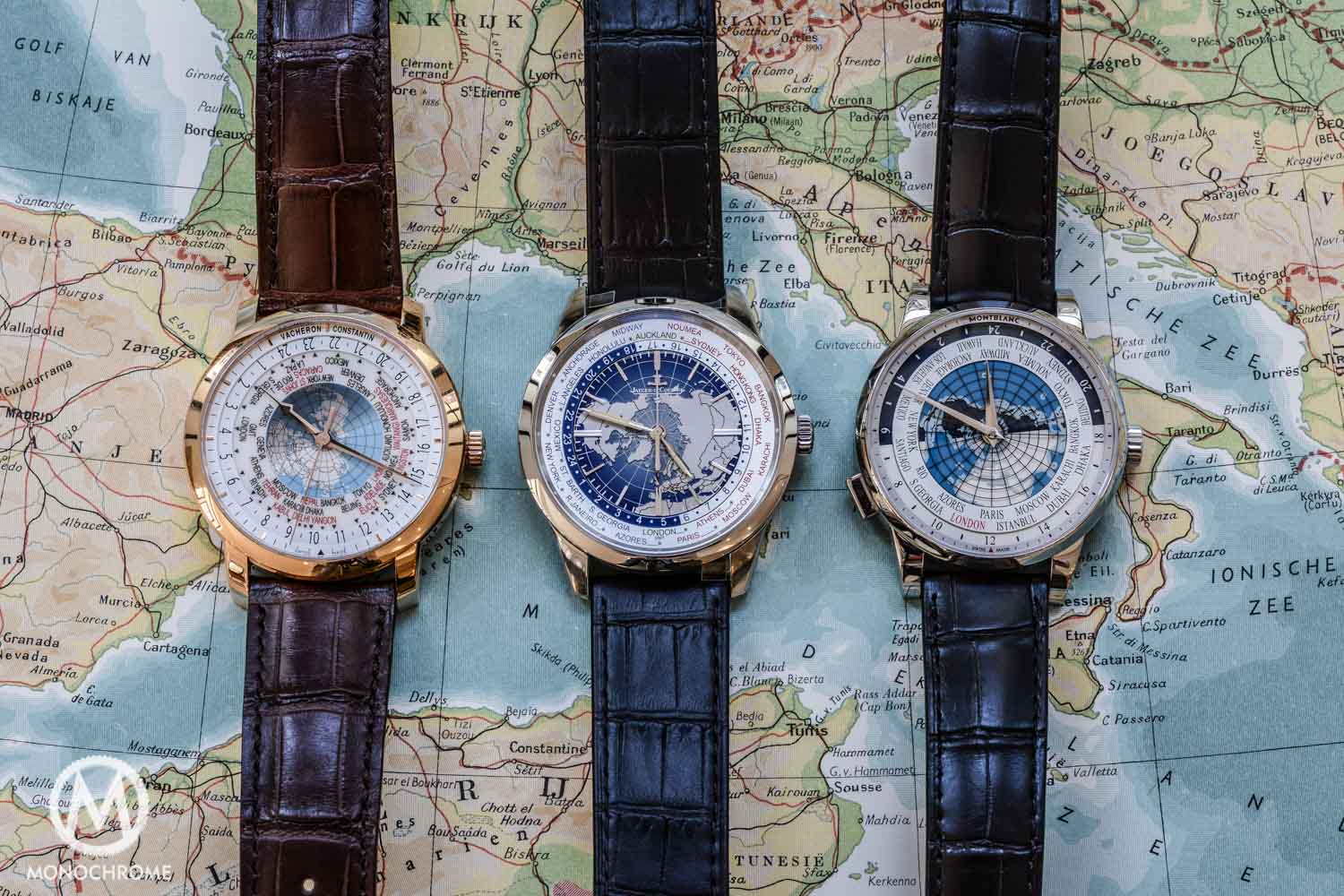
In this day and age the worldtimer is likely to be one of the most useful complications to be found in a mechanical timepiece. When Marshall McLuhan, a Canadian professor and philosopher of communication theory, wrote ‘The Gutenberg Galaxy: The Making of Typographic Man’ in 1962, not many could have foreseen how McLuhan’s description of the “Global Village” would became reality. Yet, today we live in that reality as McLuhan described, ‘the globe has been contracted into a village by electronic technology’. Hence the need to know the time in various time zones of our world, at a glance. Of course we could focus on a pluralism of devices that indicate time in more time zones, however here on Monochrome we focus on the most beautiful mechanical timepieces, and thus we have a closer look at three recent worldtimers, from three brands, which all share a design feat, namely a world map on the dial. Here are the Vacheron Constantin Traditionnelle World Time, the Jaeger-LeCoultre Geophysic Universal Time and Montblanc Heritage Spirit Orbis Terrarum.
Historical Perspective
It was Patek Philippe who dominated the worldtimer complication, not saying there were no worldtimers from other brands, however until a decade ago the family-owned Genevan-based brand was known (among others) for this complication. The Patek worldtimers all shared the basis that was laid by non-other than Louis Cottier, who can be seen as the inventor of this type of worldtimer.
1953 symmetrical double-crown yellow gold and blue enamel dial ‘Louis Cottier’ World-Timer – Patek Philippe ref. 2523
As we disclosed to you, in our series ‘A Technical Perspective – Travel Watches’, Cottier’s specificity was to design watches featuring the local time with hour and minute hands at the centre, coupled with a rotating 24 hour ring encircled by the name of different cities or places. The city of reference was placed at 12 o’clock and the centre part of the dial referred to the local time. The system designed by Cottier is still used today as the base for most worldtimers, while the fixed city indication was later made adjustable by the use of a second crown, a pusher or simply a rotating bezel; however the main base stayed the same. The Patek Philippe worldtimers ref. 5110 and ref. 5130 certainly set the tone for worldtimers, and I would not be surprised if the ref. 5131, with its iconic cloisonné dial depicting the map of the world, inspired others…
Three Modern Worldtimers with a World Map Dial
The three worldtimers we’re going to look at today, also show a world map on the dial, however here the world map is not executed as a cloisonné dial, but by use of other techniques. Only five years ago, in 2011, Vacheron Constantin introduced their iteration of a worldtimer, back than named Patrimony Traditionnelle World Time, and the moniker “Patrimony” fell due and “Traditionnelle” remained. Last year Montblanc surprised friend and foe with the Heritage Spirit Orbis Terrarum and towards the end of last year Jaeger-LeCoultre followed suit and introduced the Geophysic Universal Time.
The Montblanc and Jaeger-LeCoultre are available in steel and in 18K pink gold, while the Vacheron Constantin is only available in gold or platinum. Price-wise these watches are quite far apart, which is also logical when you look at the ‘content’. The difference between a generic third party movement, an in-house movement and an in-house movement with Geneva seal, alone make quite a difference.
The Montblanc Heritage Spirit Orbis Terrarum is the most affordable, and retails for € 5,500 Euro in steel and € 15,600 Euro in 18K red gold. The stainless steel version of the Jaeger-LeCoultre Geophysic Universal Time is available in stores for € 14,600 Euro, or € 24,900 Euro for the 18K pink gold version. The Vacheron Constantin Traditionnelle World Time has the highest retail price, namely € 52,400 Euro, and comes with the Geneva seal of approval.
Vacheron Constantin Traditionelle World Time
First the trio of worldtimers that we’re looking at today is the Vacheron Constantin Traditionnelle World Time. Upon introduction it was the first worldtimer to indicate the time in 37 timezones, representing all timezones of the world at time of conception. Fast forward a few years and now we have no less than 39 timezones. Ah well, we do not expect anyone in North Korea (one of the new timezones) to complain about this. Upon introduction the Vacheron Constantin immediately made a strong impact, not only for displaying time in all, at that time known, timezones, but also for its very appealing design.
The map of the world is painted on a disk in the centre of the dial, with a partially tinted sapphire crystal atop, so at a glance you can see in which timezones it’s nighttime and where it’s daytime. The 24-hour ring is linked to the partially tinted sapphire disk and both make a full rotation in 24 hours. All functions can be set via de crown, including setting a new local time, for instance when you’re traveling.
The following video shows how it works
The 42.5 mm case is made in 18K pink gold; however there is also a version in white gold and one in platinum. The case measures 11.62 mm in height and is the largest of the three worldtimers we’re looking at here. However the factor that really sets it apart from the rest is the Geneva Hallmark. Now you shouldn’t think too light about the Geneva Hallmark and when you consider quality of the finishing being important factors, than look no further.
The requirements that a brand/watch has to comply with are about the finishing of the movement, the build of the movement, and even the weight of the escape wheel and the angle of the escapement’s lever. Steel parts must display polished angles and their sides parallel file strokes, their visible faces must be smoothed and polished, screw heads must be polished or circular grained and their rim and slot bevelled.
But that’s not all, as in 2012 the list of requirements has been extended to testing a watch encased, and in normal wearing conditions. With the new Geneva Hallmark requirements, this quality seal has become even tougher to achieve than before, and they have a serious effect on the production costs, time and ultimately the retail price. Here you can read all about the new Geneva Hallmark set of requirements.
Specifications:
- Case: 42.5 mm in diameter and 11.86 mm thick, 3 ATM water resistant, sapphire crystal, case back with inset sapphire pane, 18k pink gold (variations in 18K white gold and platinum)
- Movement: Vacheron Constantin calibre 2460 WT, Geneva Hallmark, 28,800 vph (4 Hz), 40 hours of power reserve, hours, minutes, seconds, worldtime in 37 timezones with day&night indication
- Strap: alligator leather strap with double folding buckle
NOTE: Last year, in 2015, Vacheron Constantin introduced a cosmetic updated version of the Traditionnelle World Time in 18k pink gold and in 18K white gold. The new versions now feature an relief-engraved gold world map as the dial and a two-tone 24-hour ring.
Jaeger-LeCoultre Geophysic Universal Time
When Jaeger-LeCoultre introduced two new Geophysic models last year, it was actually the dead beat second (or True Seconds as Jaeger-LeCoultre named it) that caught most of the attention. Of course there are a few niche brands that offer this complication; however no major watch brand has offered a dead beat seconds / seconde morte in their collection, since the quartz crisis of the 1970’s. We love this jumping second / dead beat second / seconde morte or whatever you like to call it, and we even dedicated an entire section to the dead beat seconds.
The ‘other’ novelty, besides the True Seconds complication, is the worldtimer although that is not entirely new to Jaeger-LeCoultre. In the past years the brand has had several worldtimers, and today there’s still the Duomètre Unique TravelTime in the collection. The new Geophysic Universal Time combined a worldtimer with the True Seconds and together this makes a stunning traveler’s watch for those who have an understanding of the dead beat seconds complication and the need for a worldtimer.
The watch measure 41.6 mm in diameter and is 11.8 mm thick. With these dimensions and the short downward sloping lugs, it wears very comfortable on the wrist. Unlike the other two worldtimers discussed here, the Jaeger-LeCoultre features a lacquered dial and the map of the world does not rotate. The quality of the lacquer dial is absolutely breath-taking, so that makes up for the non-rotating/fixed world map.
The Jaeger-LeCoultre Geophysic Universal Time is the only worldtimer in this comparative review that also indicates whether a specific city (country) applies daylight saving and therefore indicates the correct time in both winter and summer.
The lacquer world map centre dial features the continents in bas-relief and the seas go deep dark blue at the outskirts of the world map, depicting the equator, to greyish towards the North Pole in the dial’s centre. The 24-hour ring surrounding the world map is executed in two colours: deep blue for between 6 pm and 6 am, while the day time (6 am – 6 pm) is in off white, like the city ring surrounding the 24-hour ring.
On the wrist, the Geophysic Universal Time wears very comfortable. It’s easy to read the time, both local time, as well as the time in various timezones. It could have been more intuitive if the centre world map would have rotated like both other worldtimers in the comparative review.
The build and finishing of the movement, Jaeger-LeCoultre calibre 772, is of course superb. Jaeger-LeCoultre has always been a true movement manufacture, and many high-end brands have used (or are still using) JLC movements. In an interview with Monochrome, Daniel Riedo, Jaeger-LeCoultre’s CEO, told us that he’s planning to slowly reduce manufacturing movements for other brands, so the focus can be more on their own watches.
Specifications:
- Case: stainless steel or 18k pink gold, diameter is 41.6 mm and 11.8 mm thick, sapphire crystal, case back with inset sapphire crystal pane
- Movement: Jaeger-LeCoultre calibre 772, 40 hours of power reserve, hours, minutes, dead beat seconds, worldtime in 24 timezones with correction for daylight savings
- Strap: alligator leather strap, double folding clasp
Montblanc Heritage Spirit Orbis Terrarum
The third worldtimer that we’re looking at today is the Montblanc Heritage Spirit Orbis Terrarum; a watch that send a small shock-wave through the watch industry when it was introduced last year. Upon introduction the Montblanc’s new worldtimer was available for a retail price of approx. € 5,000 Euro, and although it is not the most affordable worldtimer on the market, it certainly is the most affordable worldtimer that has the looks of a proper high-end watch.
The Montblanc Heritage Spirit Orbis Terrarum (that’s a mouthful) is available in stainless steel and in 18k red gold and is the most affordable of the lot. By a distance! It is however also the only one without an in-house movement, although it has to be noted that the “worldtimer module” that also requires modifications to the standard base movement (Selitta SW-300) has been developed and manufactured in-house. Montblanc opted for the Selitta SW-300 base movement, a clone of the praised ETA 2892 that is now unavailable for brands outside the Swatch Group.
The complete movement (base movement + in-house module) is named Montblanc calibre 29.20. It has 42 hours of power reserve, displays the hours and minutes (no second hand) and the worldtime on a 24-hour scale. The choice for this movement allows Montblanc to keep the price very attractive, and focus on a good looking dial and a very well finished case.
The case (available in stainless or 18k red gold) measures 41 mm in diameter and is 12 mm thick. It features straight brushed sides and a polished case back and bezel. The crown, positioned at 3 o’clock, features a bas-relief Montblanc logo, and on the other side of the case is a pusher to adjust the local time when traveling. The Montblanc Heritage Spirit Orbis Terrarum is the only of the three worldtimers with a pusher to adjust the local time. The adjustments on both other worldtimers is done via the crown.
The dial features a world map printed, largely transparent, on the underside of a sapphire crystal disk. Below that disk rotates a silver/white and dark blue disk that is connected to the (also) bi-colour 24-hour ring. When this disk rotates, it reveals where on earth it’s between 6pm and 6am, because the dark blue is visible through the sapphire disk with the world map. This way you can see the day and night in all places in one glimpse.
NOTE: This year Montblanc introduced another worldtimer, the 4810 Orbis Terrarum, which is 43mm in diameter and features a slightly more colourful world map on the dial.
Specifications:
- Case: stainless steel or 18k red gold, 41mm in diameter and 12mm thick, sapphire crystal and case back with inset sapphire pane, water resistant to 3 ATM, pusher for adjusting local time in the case band at 8 o’clock position
- Movement: Montblanc calibre 29.20, 40 hours of power reserve, hours, minutes, worldtime in 24 timezones
- Strap: alligator leather strap, triple folding clasp
Conclusion
These three worldtimers share some common design feats, and certainly a common complication. Furthermore all three are very well build and finished timepieces, although we also have to realise that we can’t really compare apples and pears. The Vacheron Constantin bears the Geneva Hallmark, the Jaeger-LeCoultre also sports an in-house movement, and the Montblanc comes with a third party movement with in-house worldtime module. This alone already determines that prices are far apart; the gold Montblanc comes at approx. the same price as the steel Jaeger-LeCoultre and the Vacheron Constantin is more than double the price of the gold Jaeger-LeCoultre.
The JLC offers True Seconds as additional feat, and the indications on the city ring make it possible to determine the worldtime in 24 cities around the world, also for daylight saving time. Although the dial is absolutely striking, it doesn’t rotate like on the other two.
The VC bears the Geneva Hallmark, a very prestigious quality control that has its effect on the entire manufacturing process and the price. Its central second hand does not jump, but is a normal sweeping second hand. Functions can be set via the crown.
The Montblanc is the most affordable of all three, which is possible because they opted for a ‘generic’ movement with a manufacture worldtime module. It is also the only of the three to feature a convenient pusher in the case band to adjust the local time when traveling.
The finish of the case of all three watches is very nice, no debate about that. The dial of both the Vacheron and the Montblanc rotates and makes it easier to spot day or night in any location, while the Jaeger has a fixed dial. On the other hand, the finish of that dial is absolutely stunning! Each and every watch has its pros and cons, and this is something that’s in the eye of the beholder.
Official retail prices in the EU
- Montblanc Heritage Spirit Orbis Terrarum in steel – € 5,500
- Montblanc Heritage Spirit Orbis Terrarum in 18k red gold € 15,600
- Jaeger-LeCoultre Geophysic Universal Time in steel € 14,600
- Jaeger-LeCoultre Geophysic Universal Time in 18k rose gold – € 24,900
- Vacheron Constantin Traditionnelle World Time in 18k rose gold – € 52,400
We’d like to thanks Schaap & Citroen in The Hague for making available the Jaeger-LeCoultre and Vacheron Constantin for the photoshoot. The Montblanc is property of the author of this article.

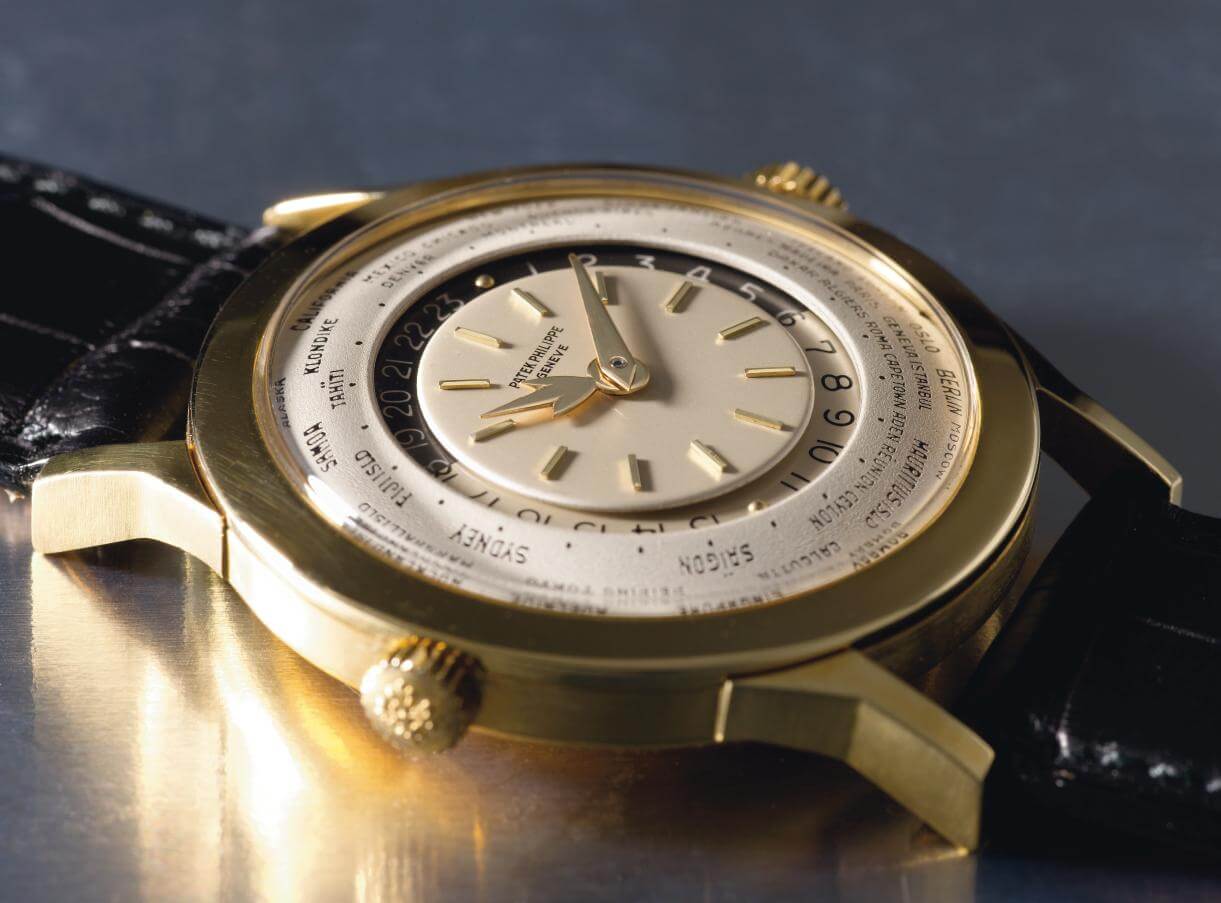
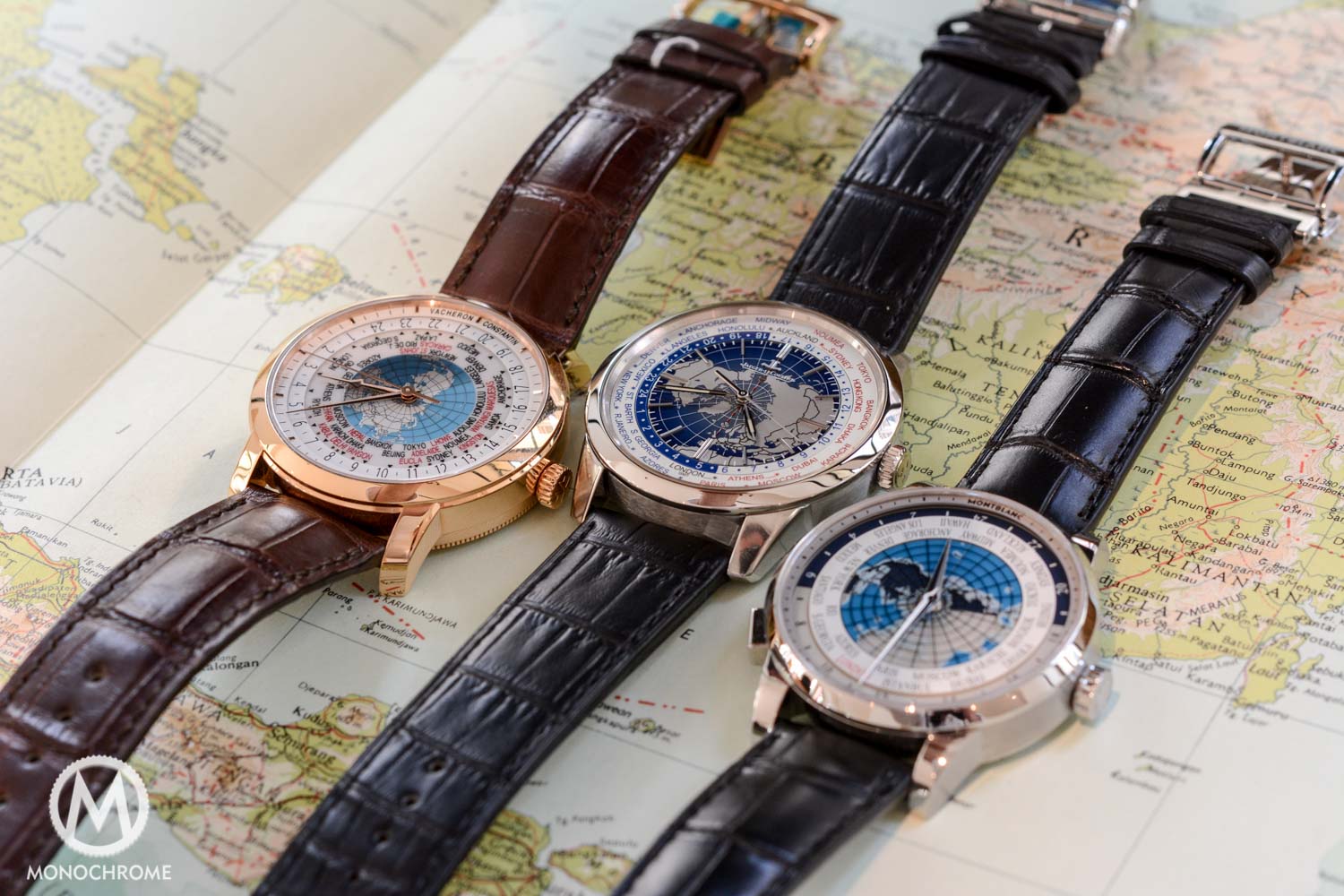
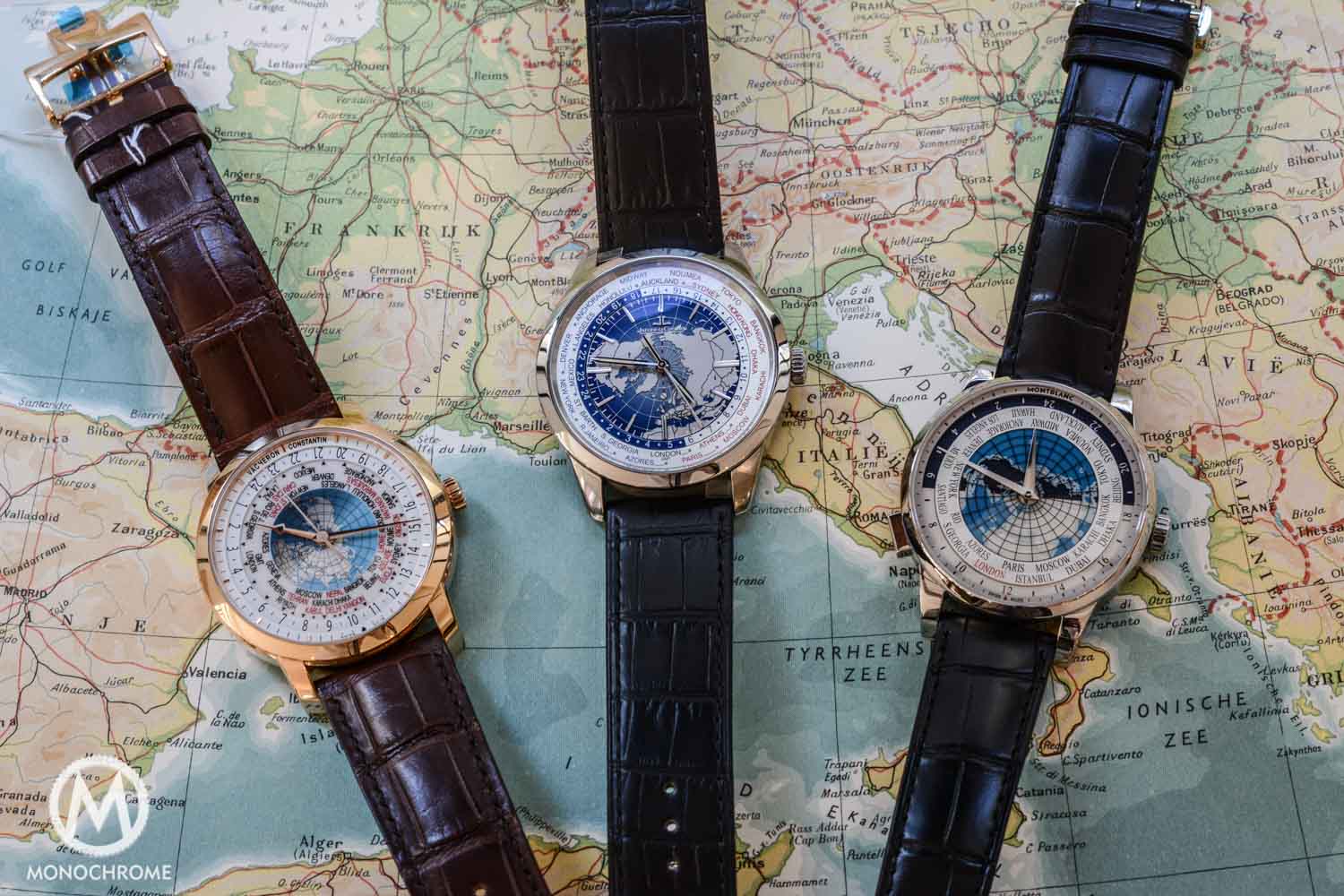
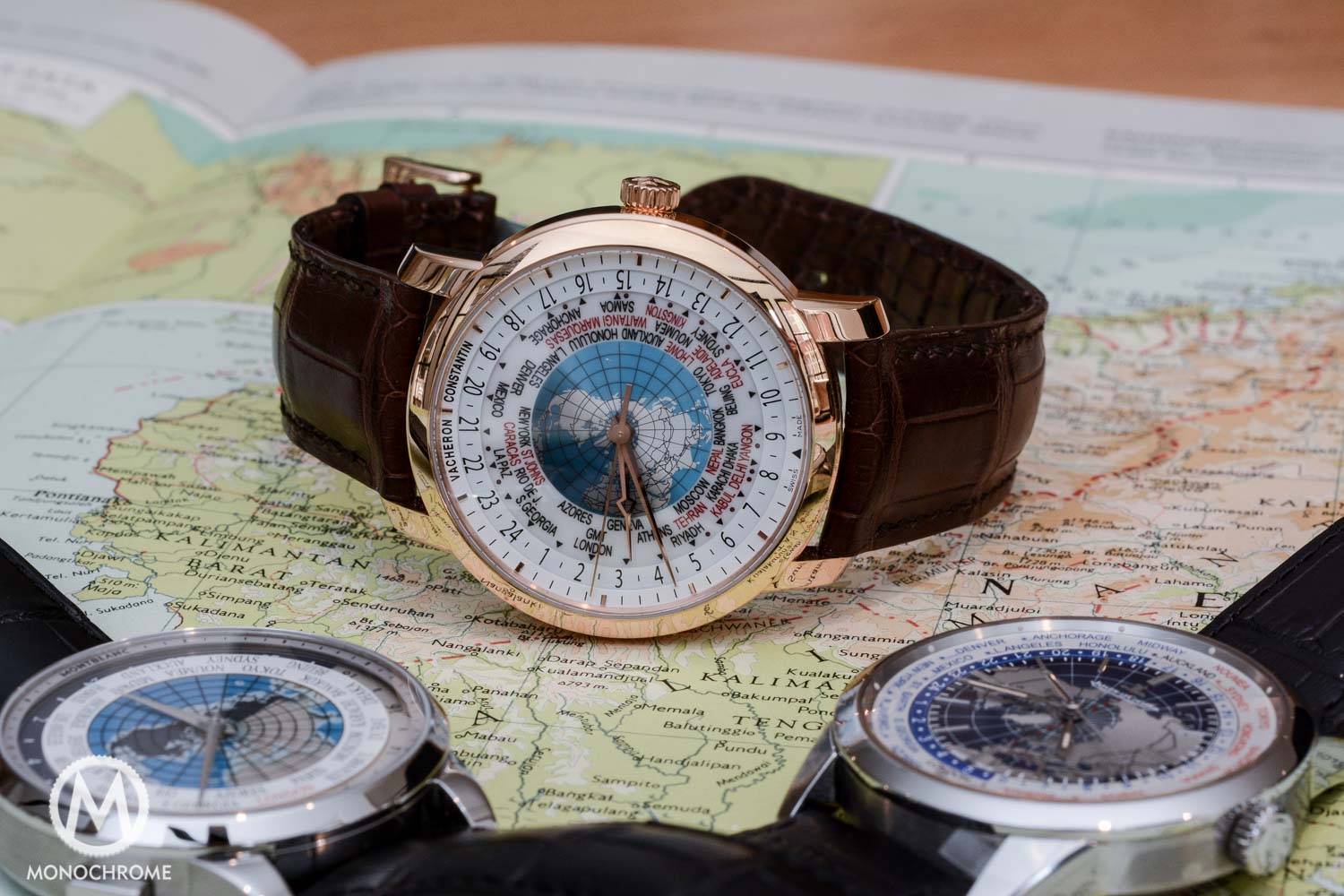
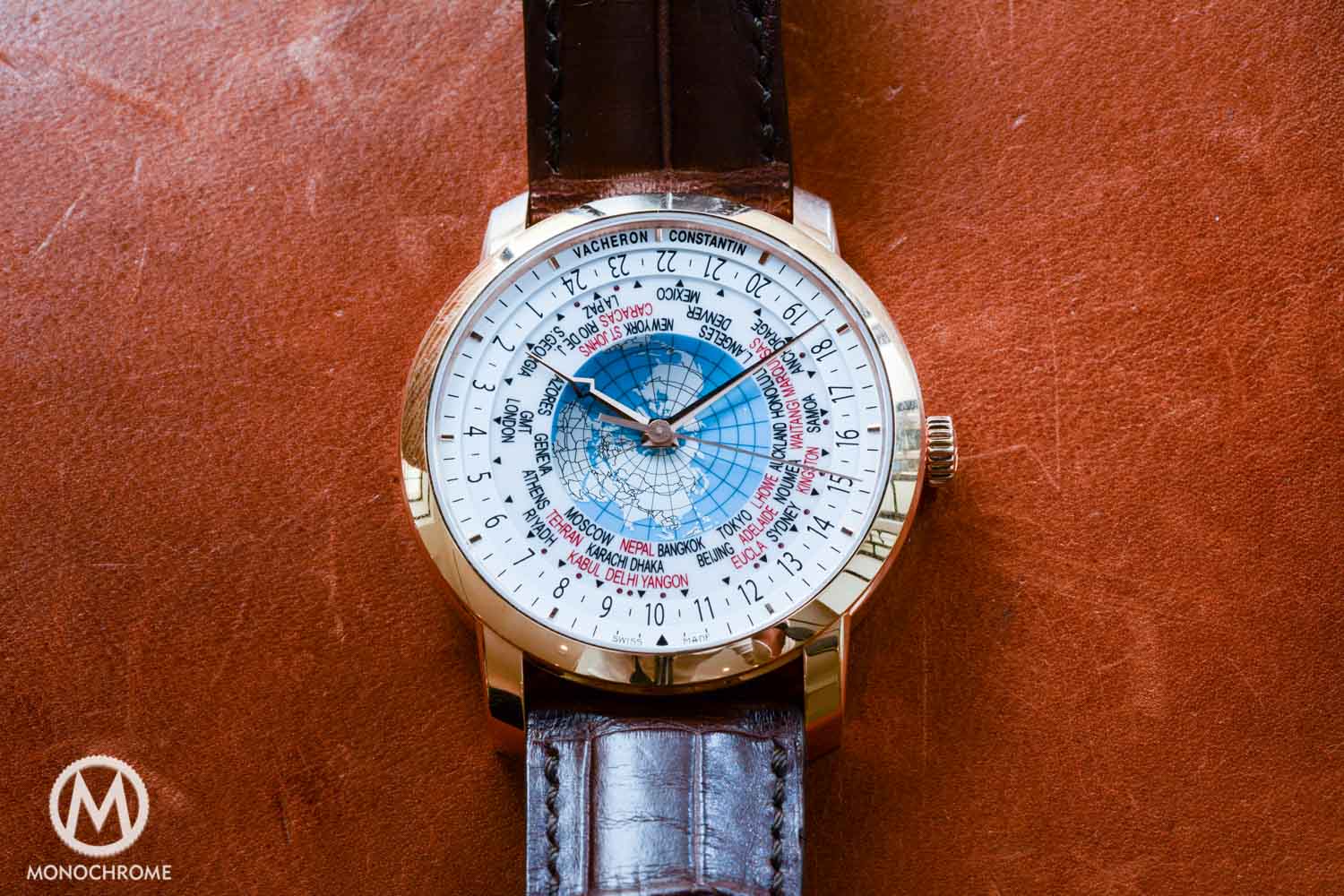
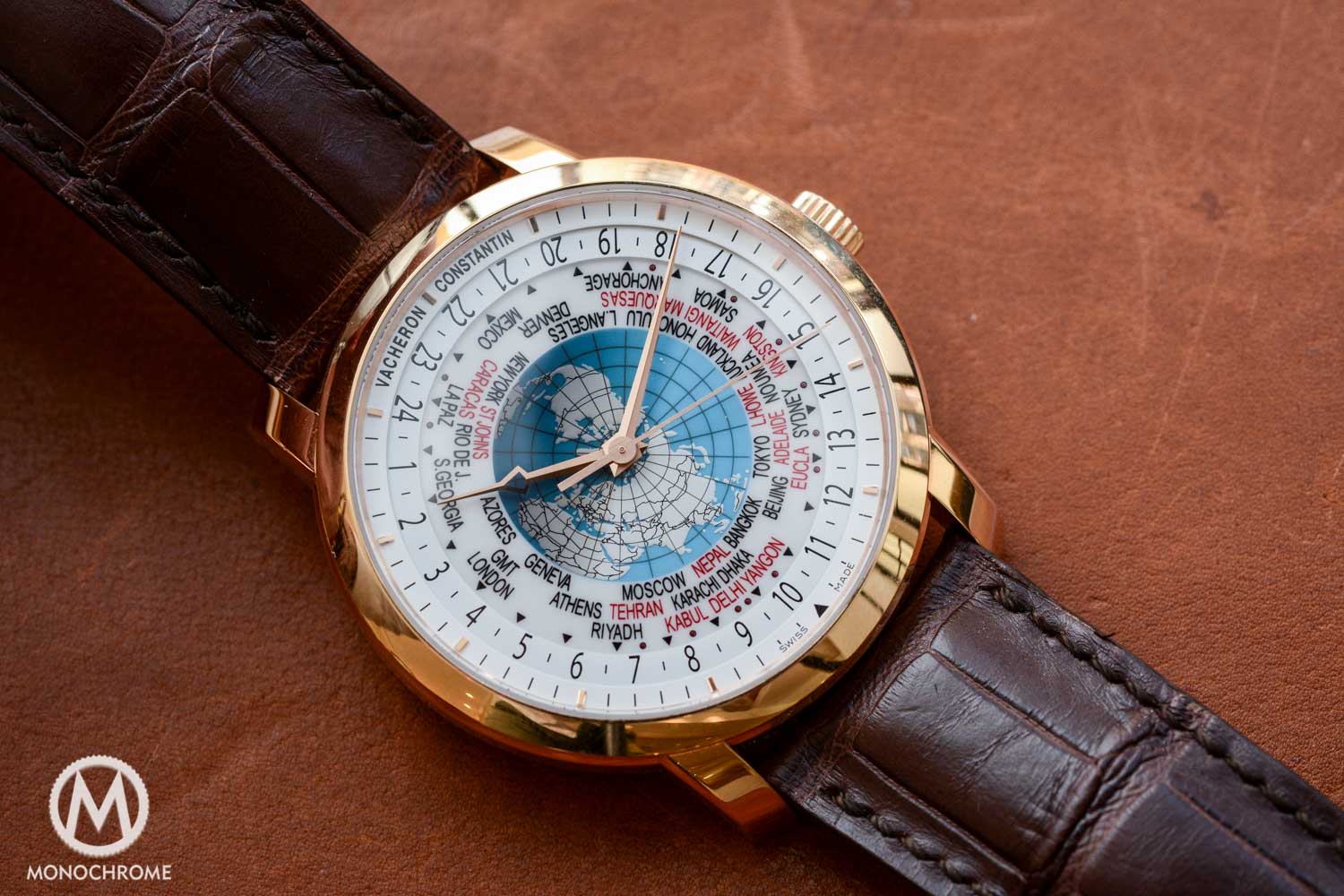
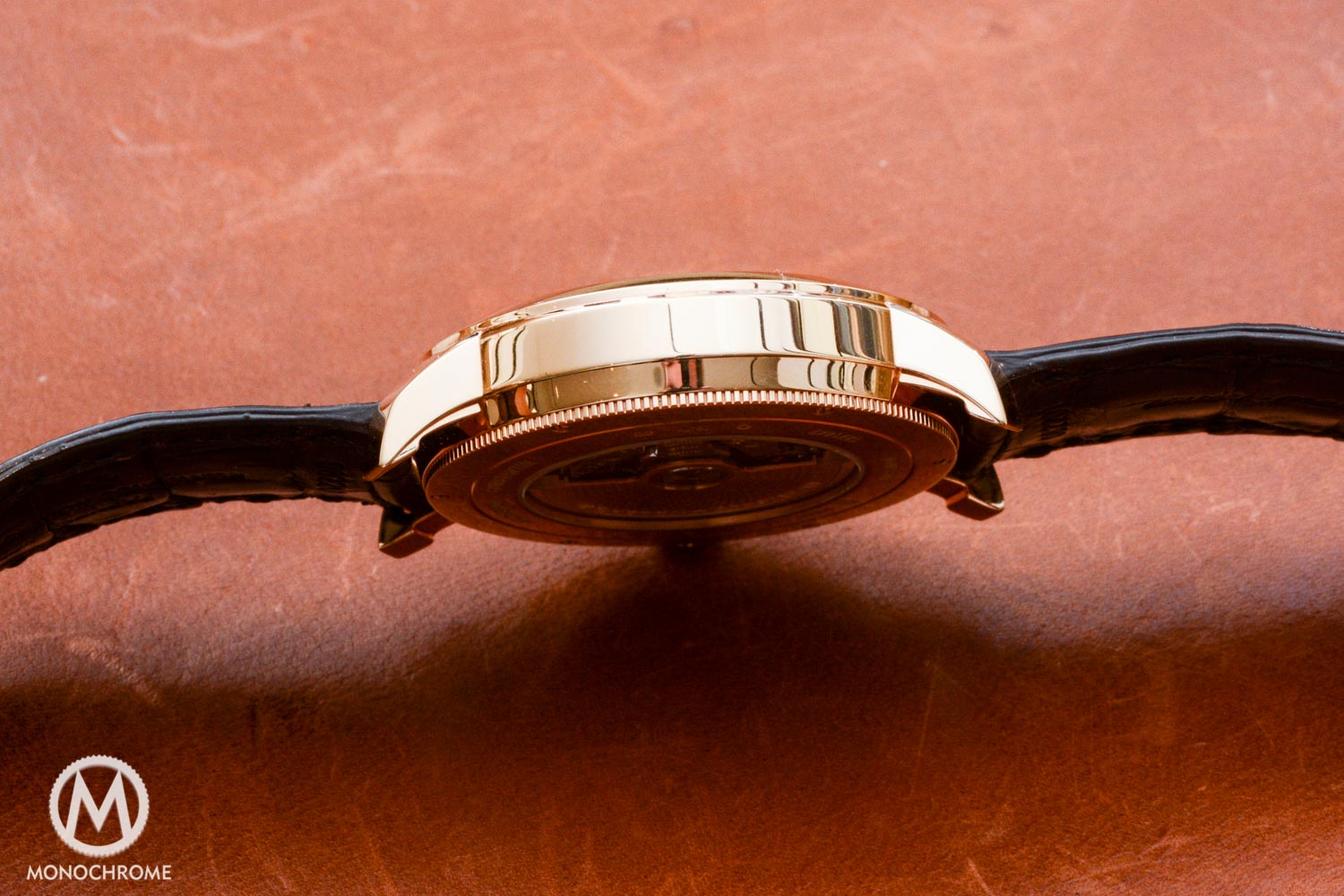
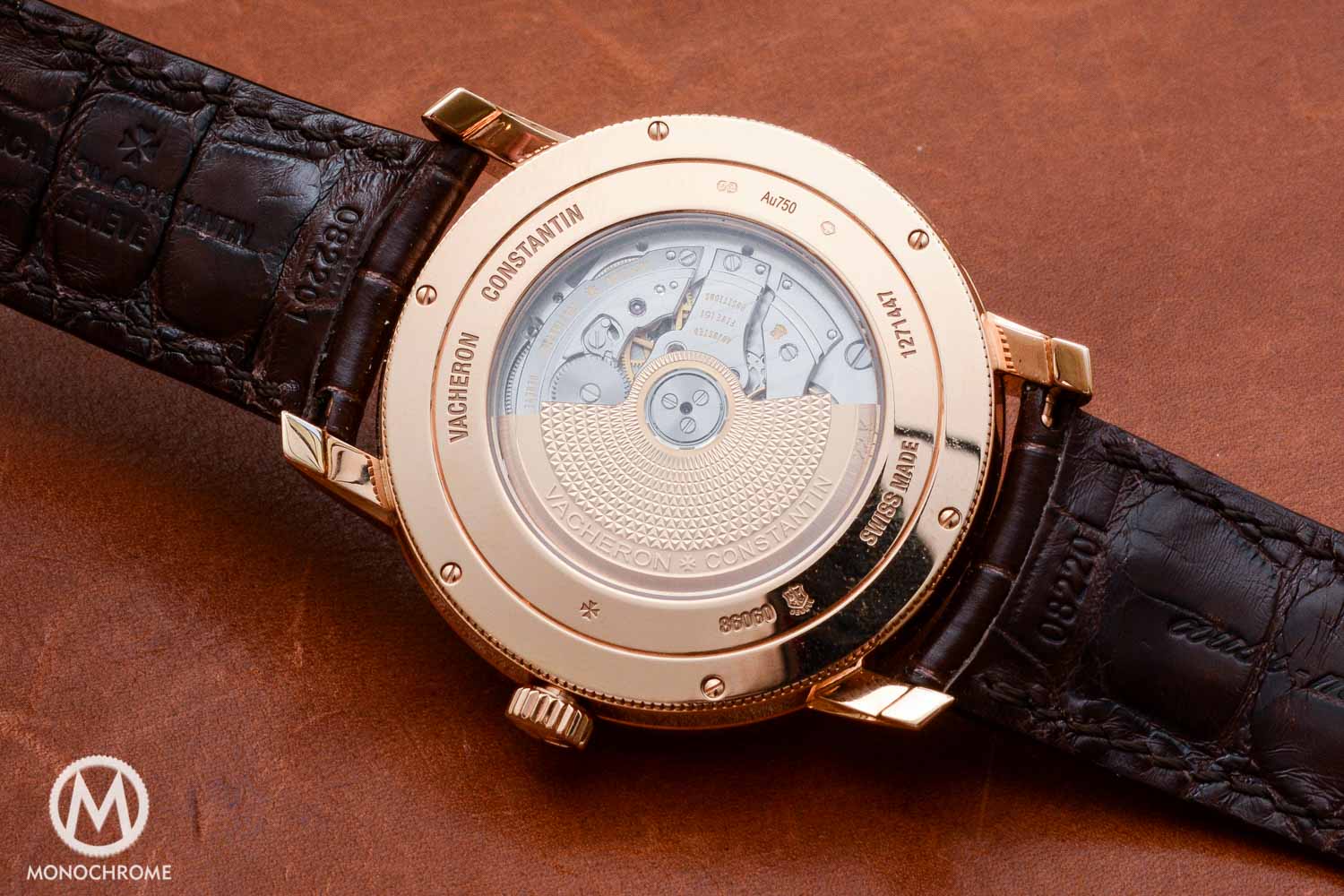
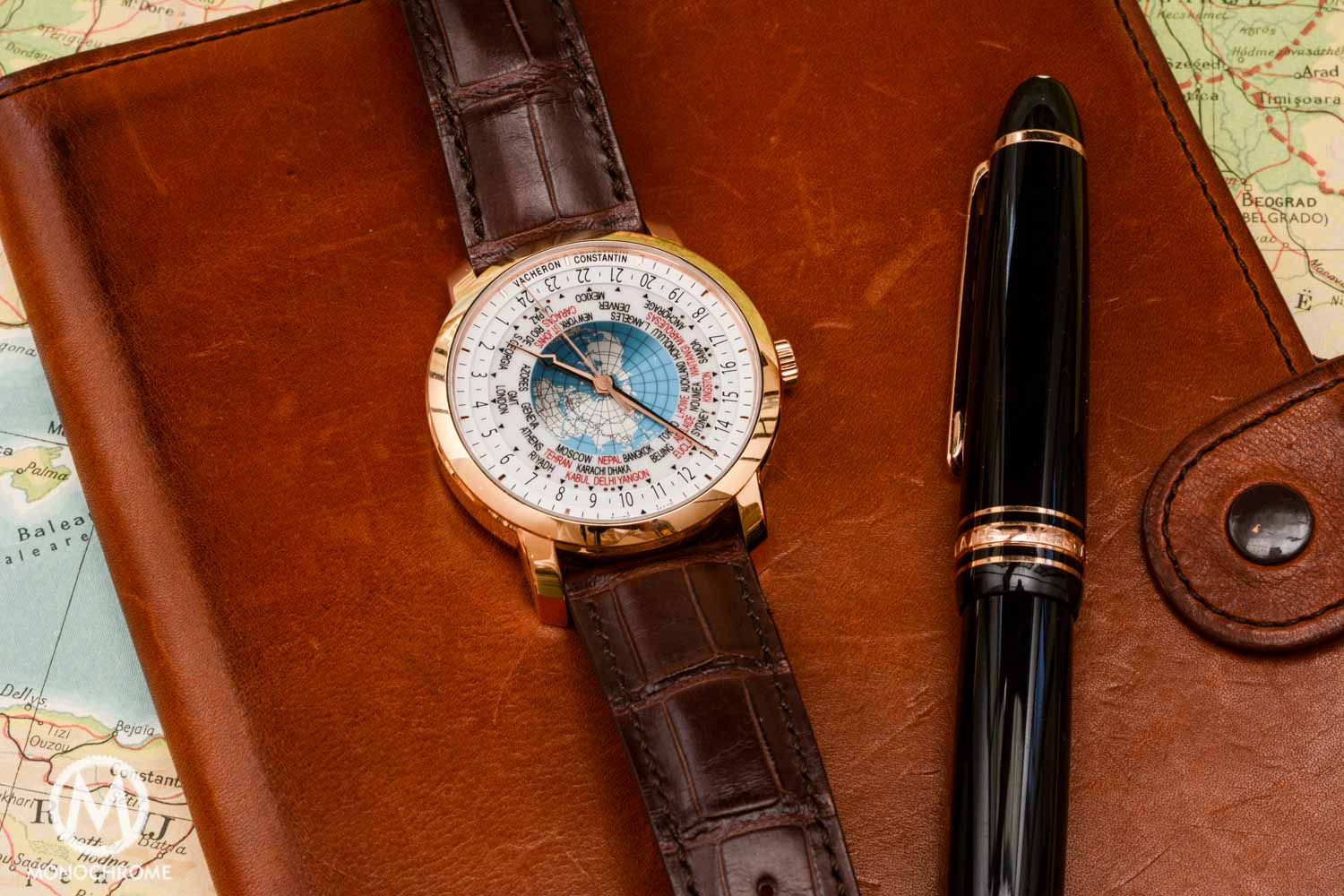
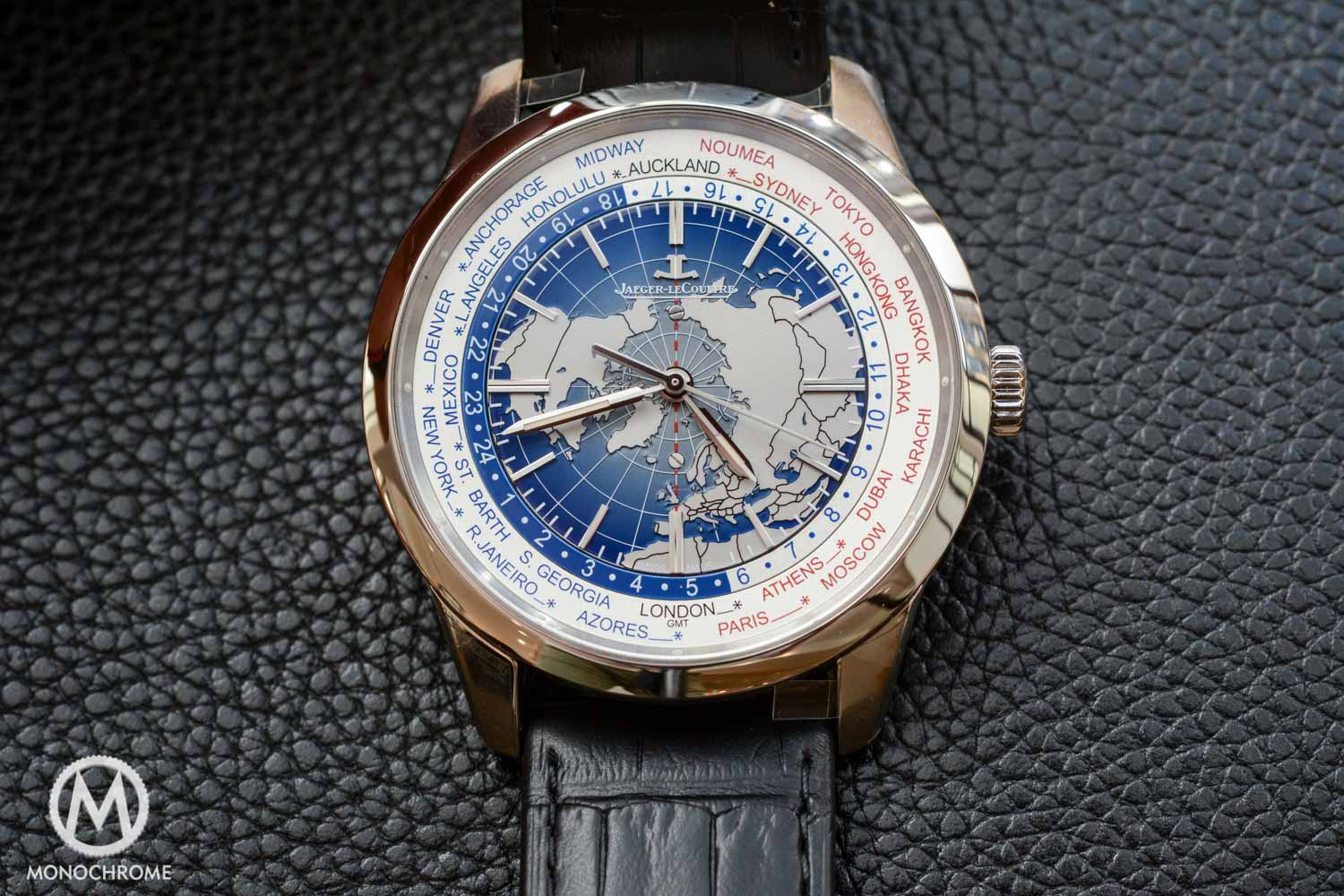
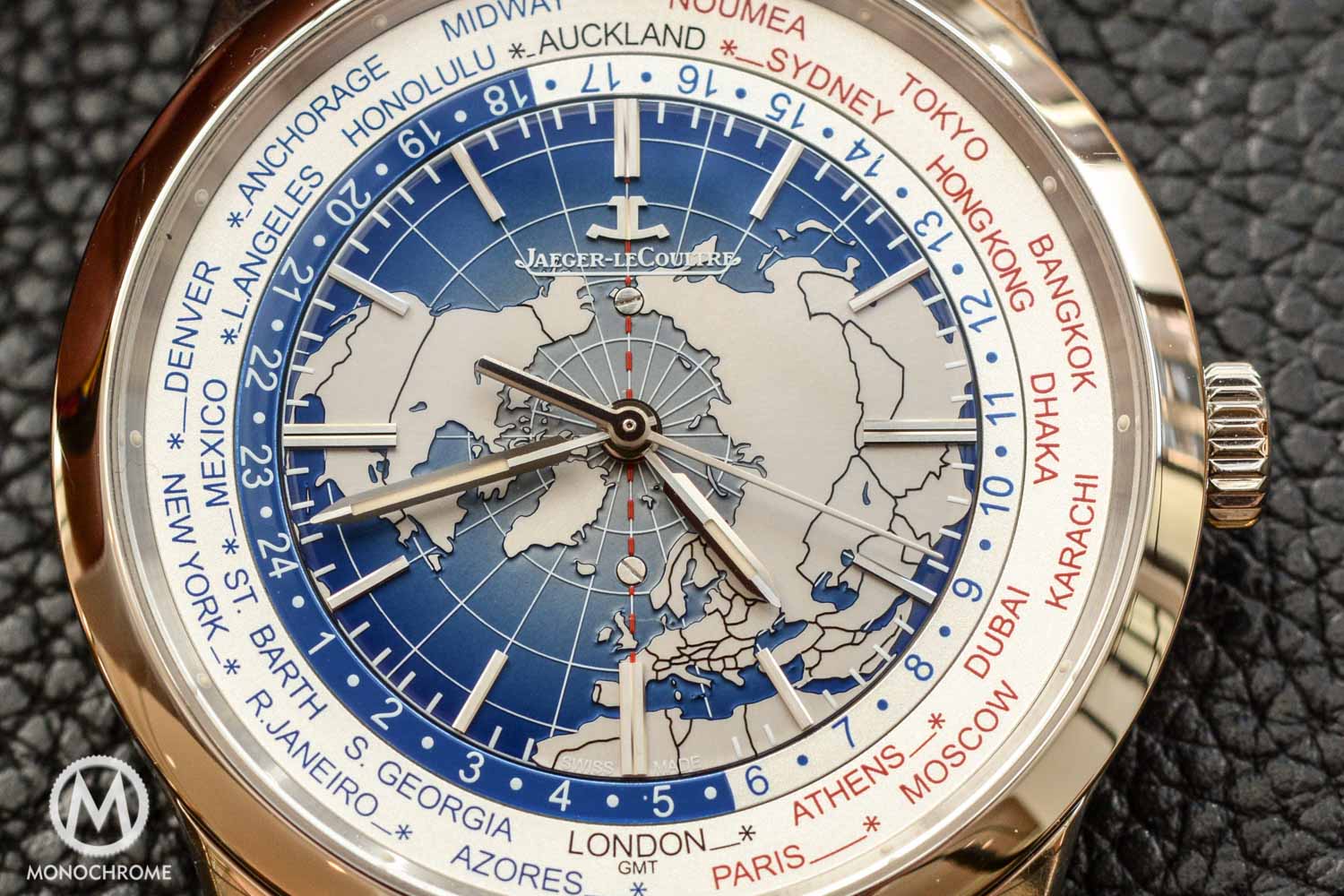
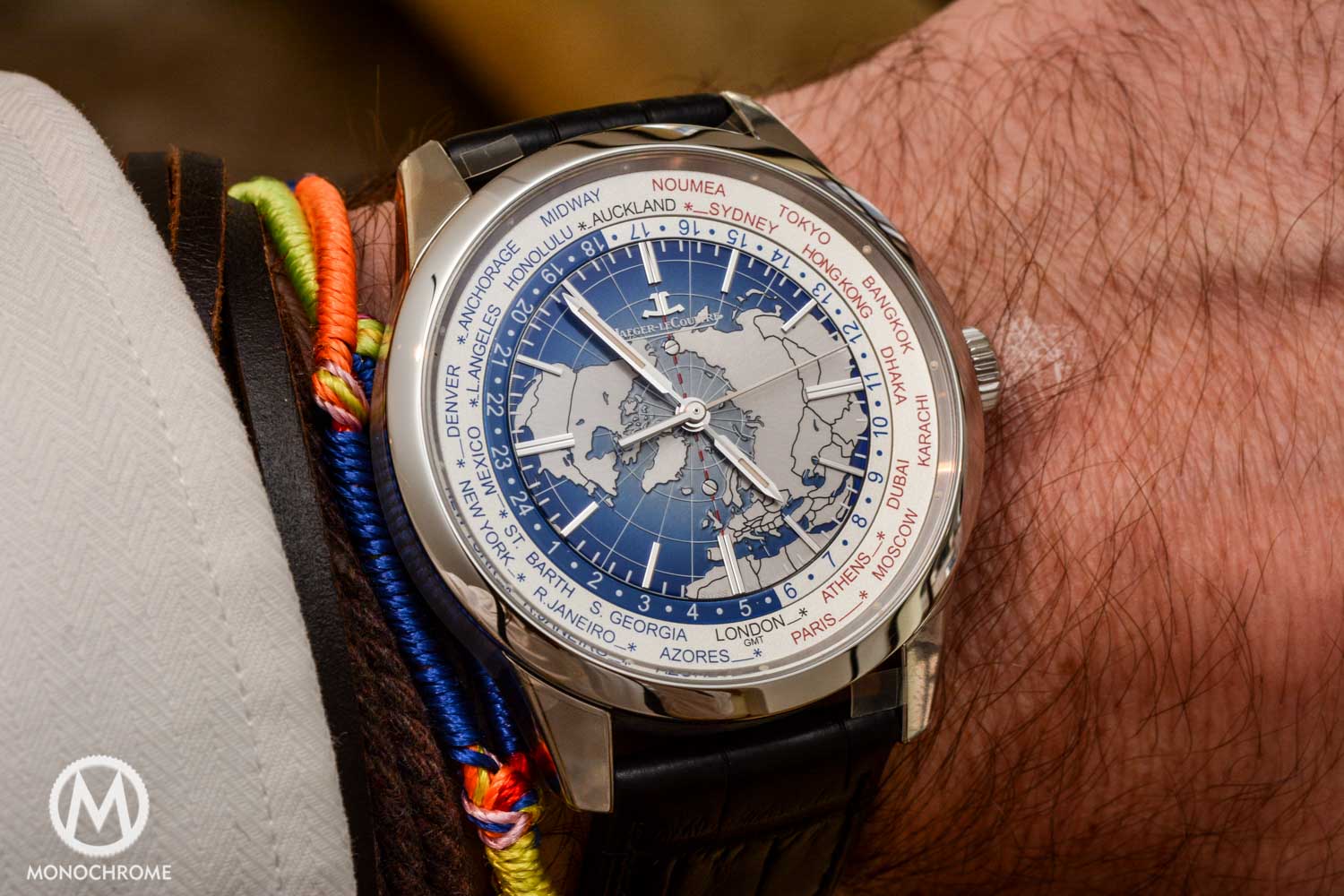
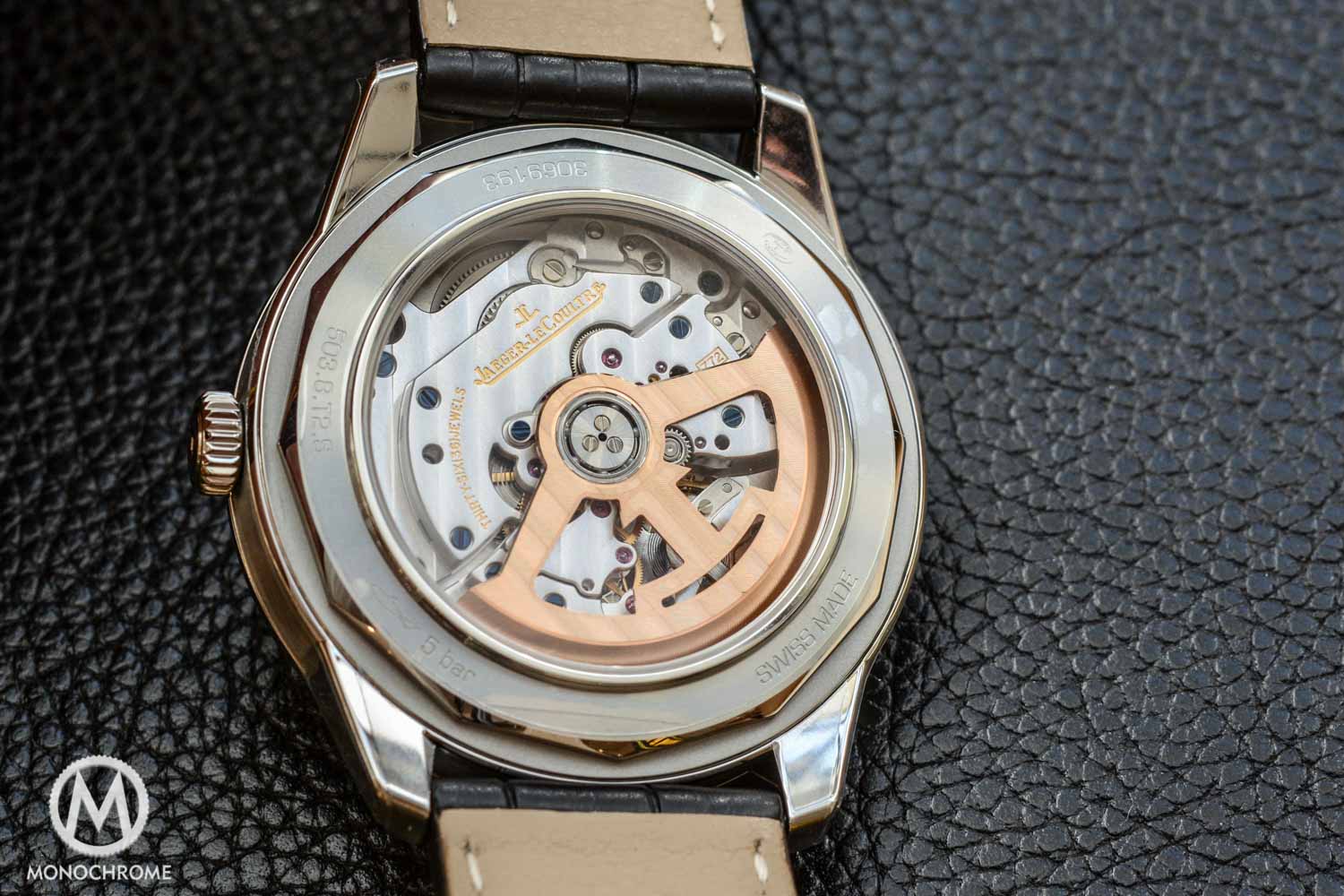
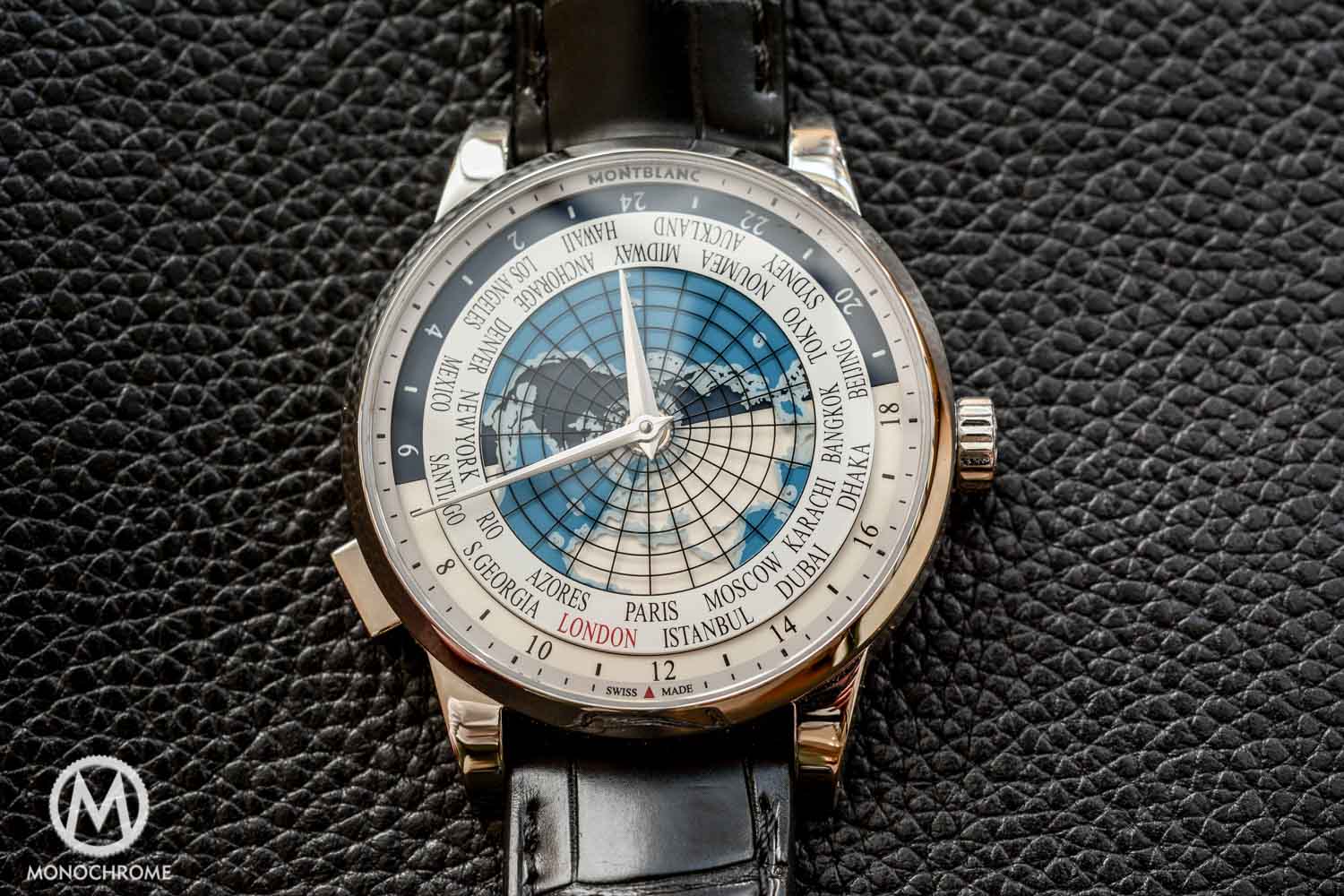
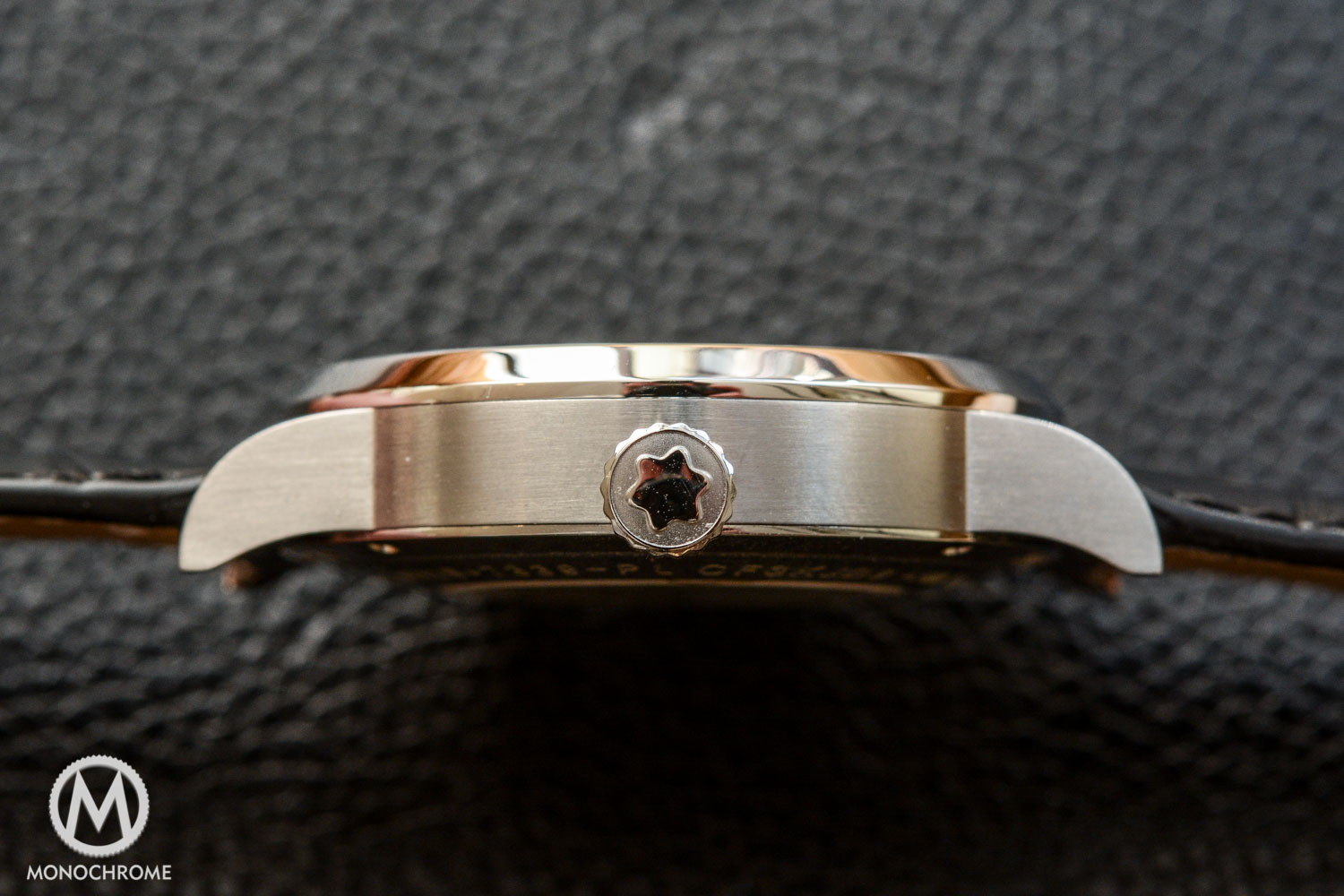
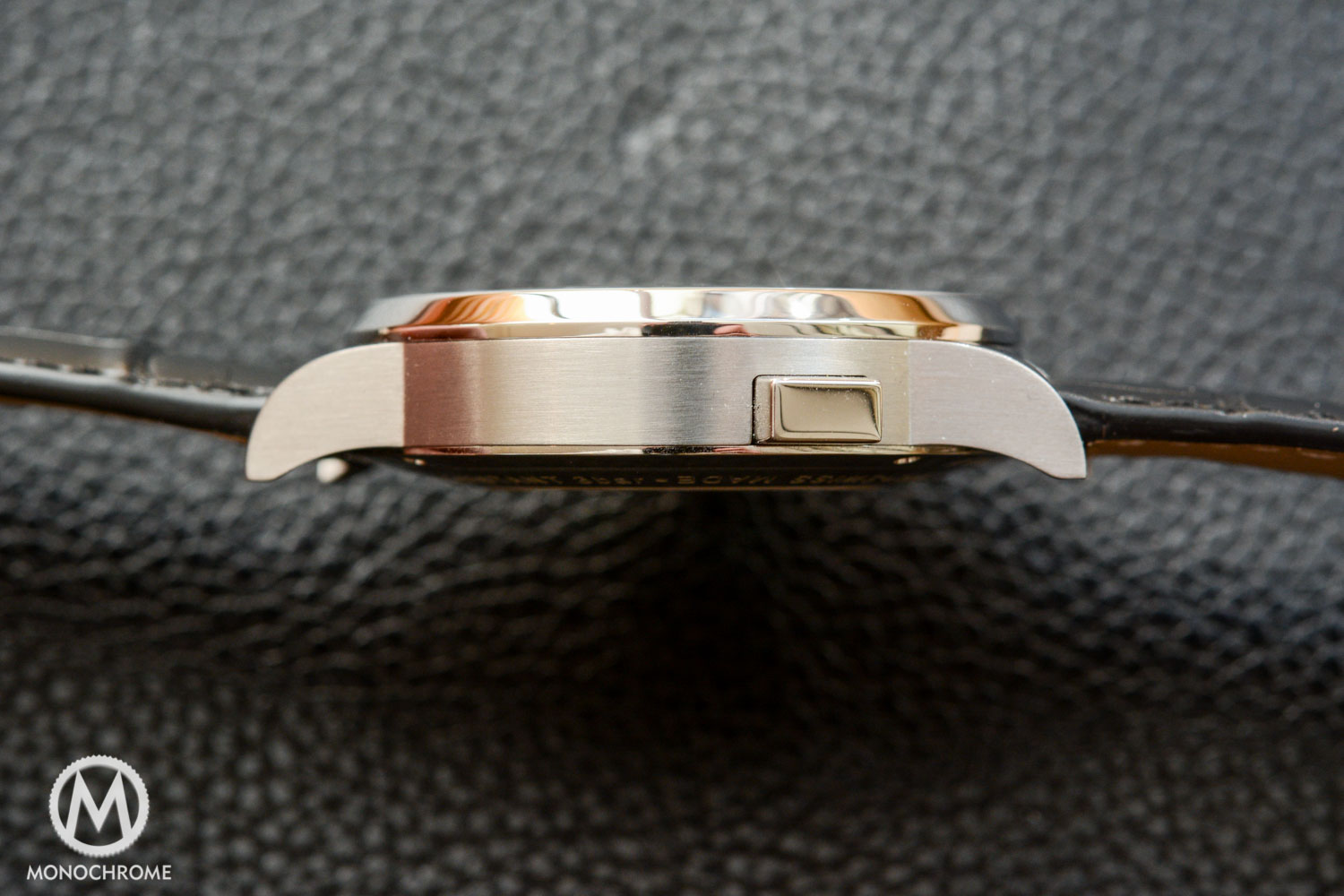
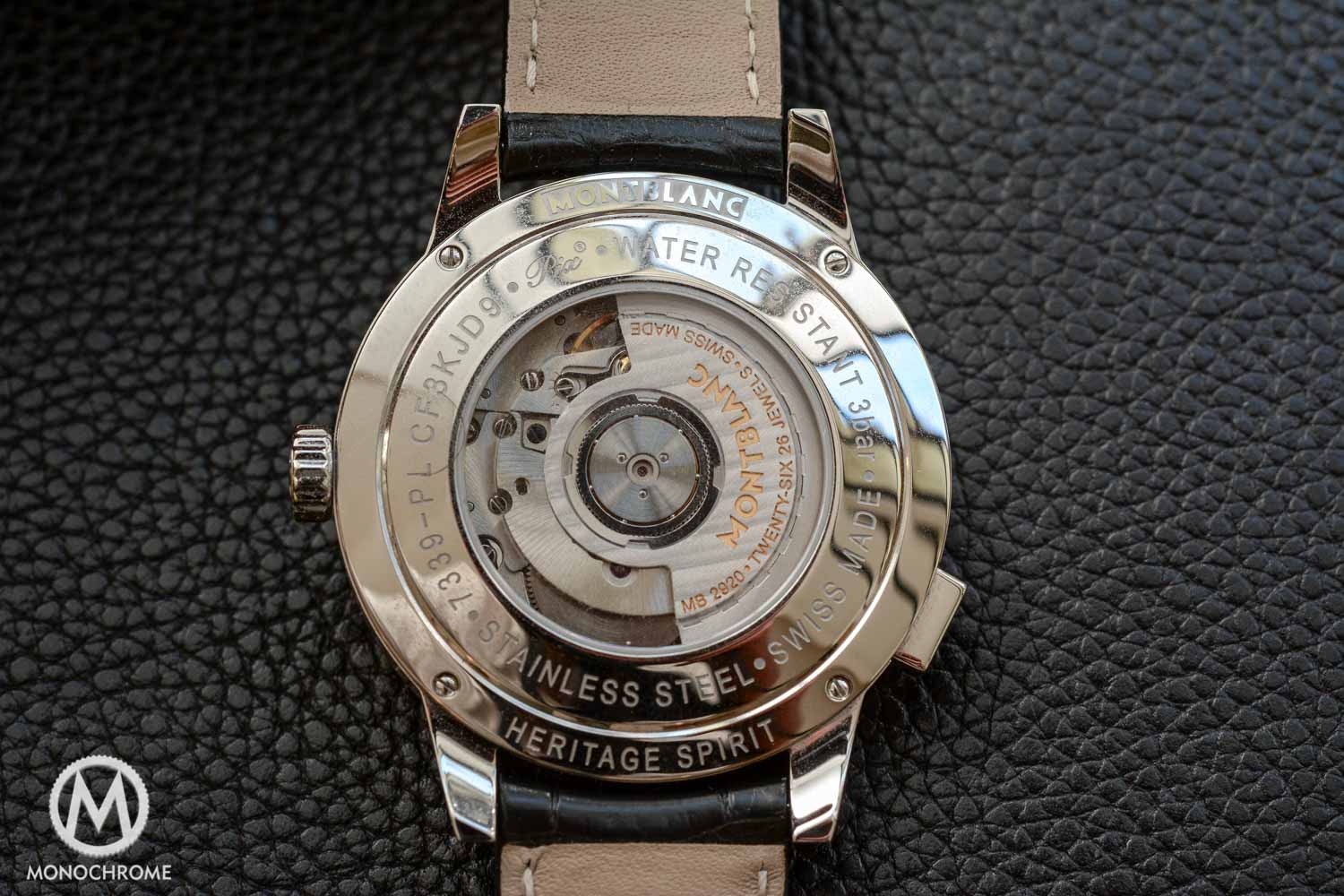
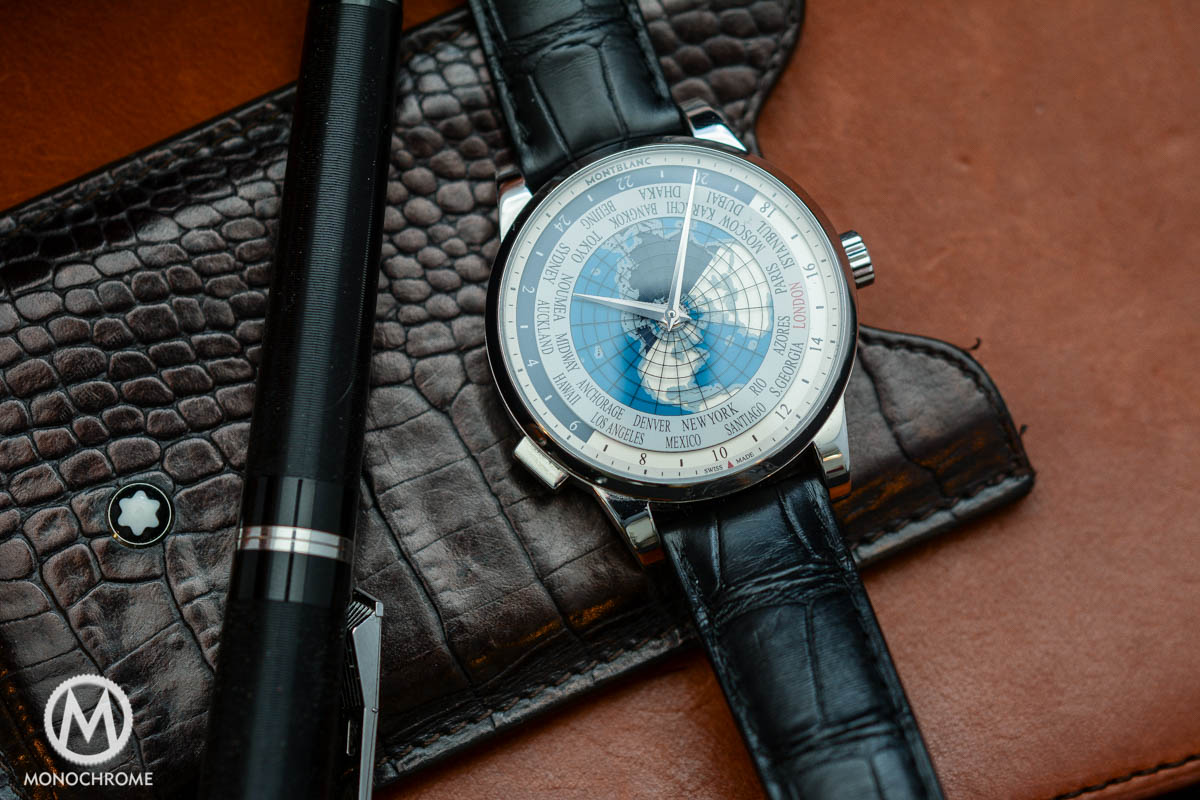
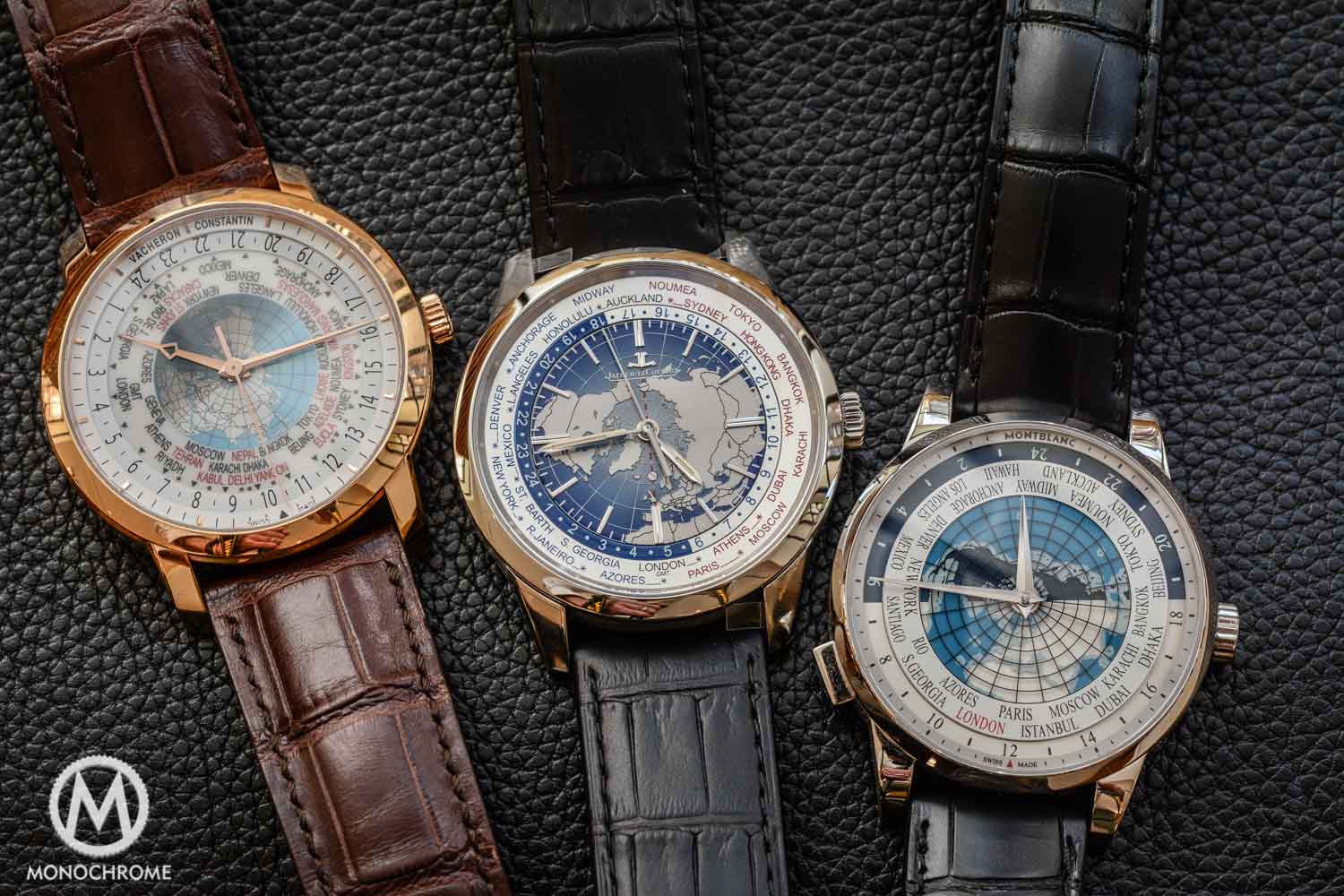
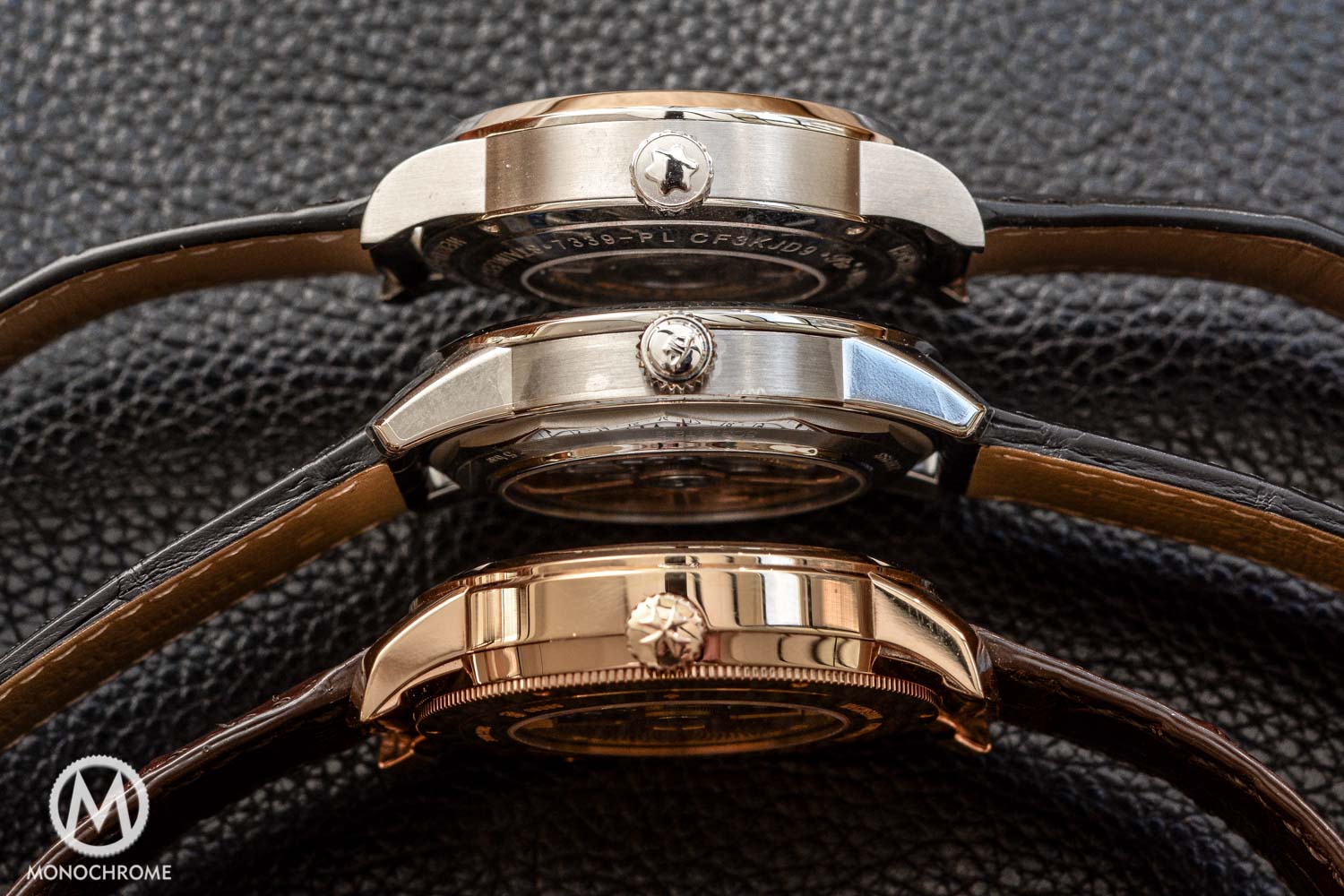
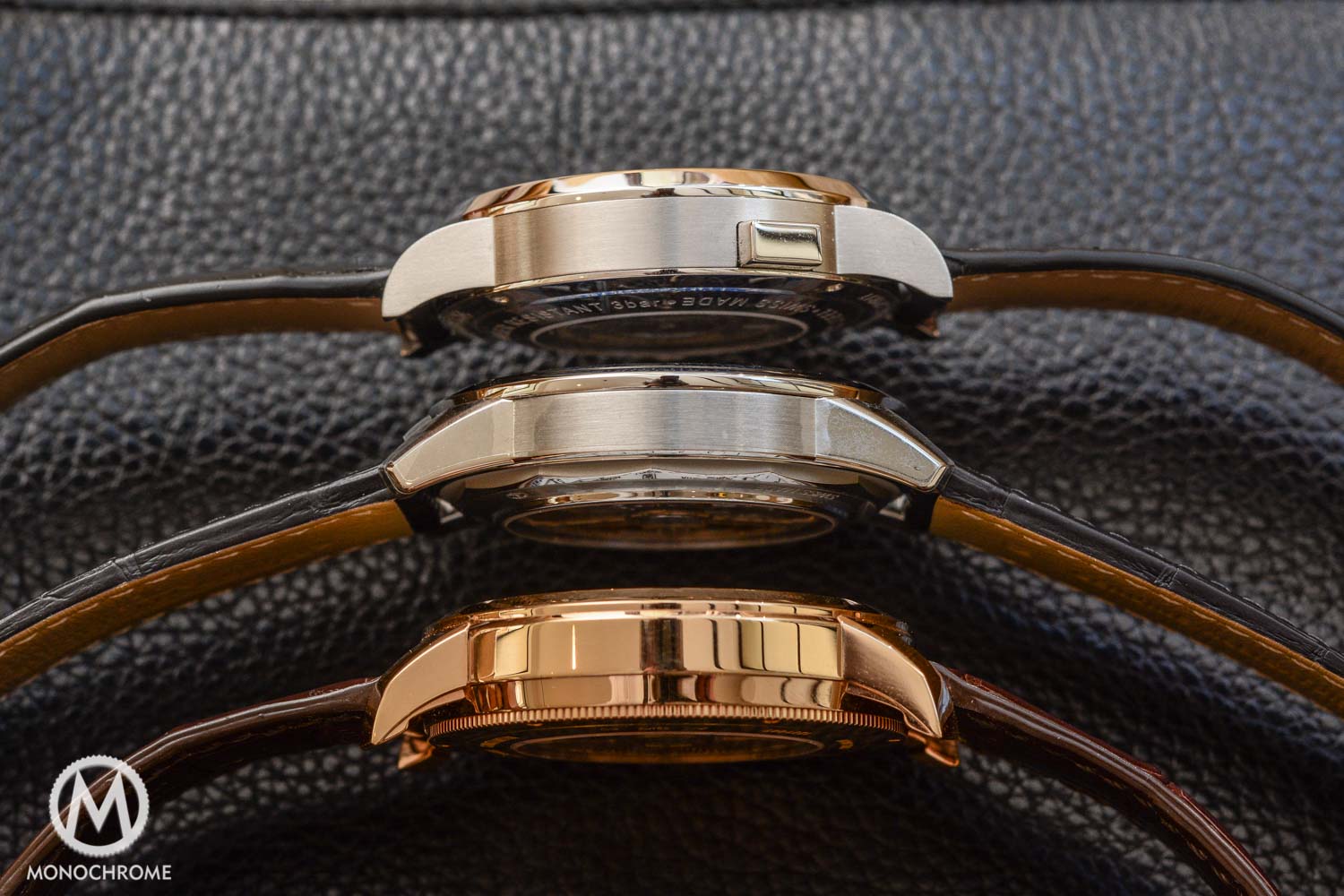
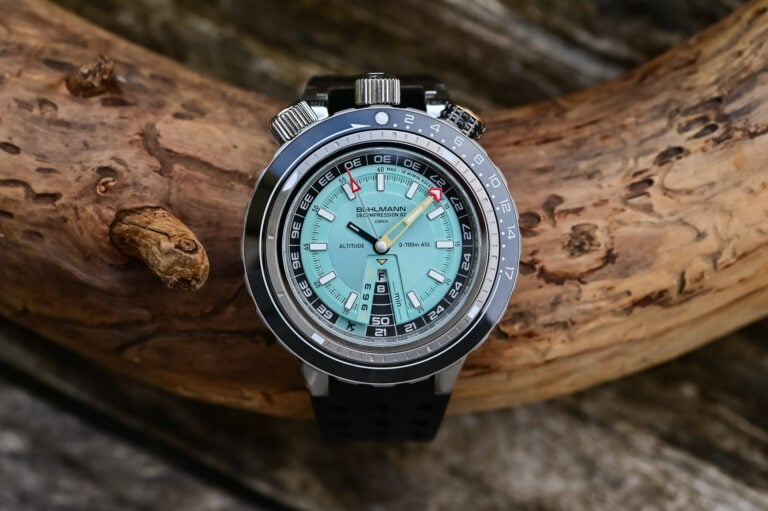
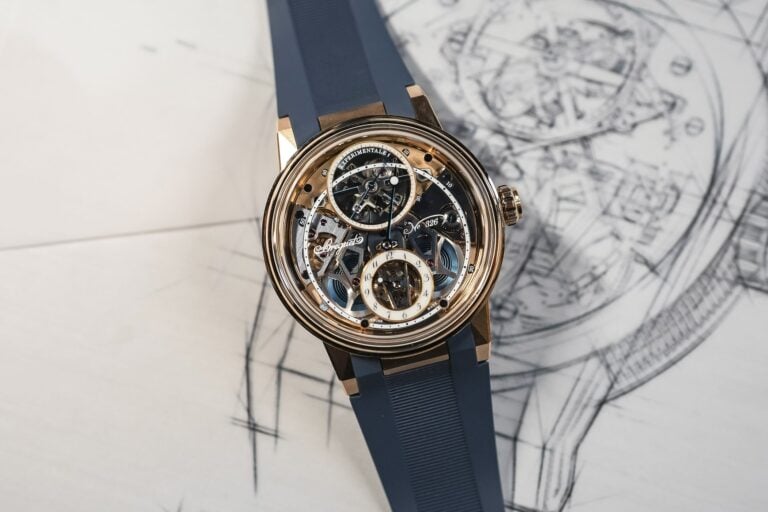
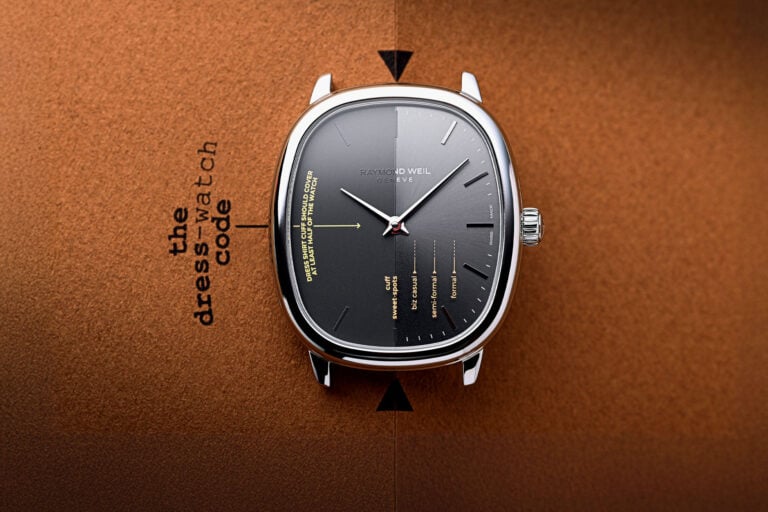
4 responses
You made a heroic effort trying to justify the fact that the Richemont Group, owner of all three brands, has essentially decided to market the same watch at three price levels. As the owner of a Vacheron Constatin I was deeply disappointed at the launch of basically the same watch by the two other brands. This was the type of marketing strategy that killed the American luxury auto brands, Cadillac and Lincoln. In the 1950s and sixties they were unique brands. When from the 1970s onwards they became Chevrolets and Fords with better finishing, they were wiped out by Mercedes and BMW.
If Richemont continues with this strategy, I can foresee the demise of Vacheron Constantin as a Brand. Had the Jaeger Le-Coultre model been available when I bought my Vacheron, that’s the watch I would have bought, particularly given its daylight savings time feature. The price difference would have not justified purchasing the Vacheron.
Great and comprehensive read!
Interesting article with appropriate comment. However I do find World Timer watches quite unattractive – too much writing! How much more interesting is the Christopher Ward World Timer where the Time Zone is selected on the World Map. Possibly not in the same league as the ones described above but neither is the price, but still much more interesting.
@Luis H Ball: >What you are saying is simply as it is: Not correct! We’re talking about thre different movements here. you cant just compare the VC movement with the third party movement as a Selitta SW300 is, that ticks in side the montblanc. Same goes to VC vs. JLC.
If you are saying that its basicly the same, you did not understand what HH is. There is a german speaking: “du kannst nicht birnen mit Äpfeln vergleichen” – “You cant compare pears ans apples” 🙂